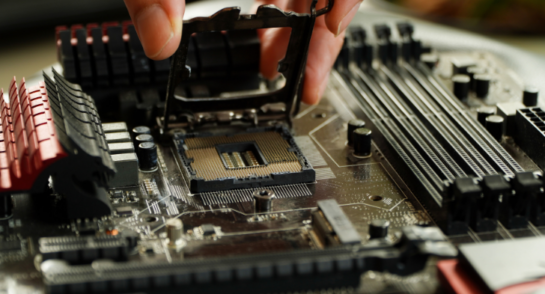Inefficient processes may be costing your business billions of dollars a year. And if you think that sounds dramatic, then it’s worth considering all the parts you send out to customers every month. When you combine unnecessary storing, retrieving, repairing, replacing and recycling of parts into the equation, it all adds up to a significant hole in your profits. Meanwhile, your supply chain department is rushing around trying to plug the gaps—constantly trying to find ways to minimize risk while cutting costs. In this blog, we’ll explore how to empower your supply chain managers—and stop profit leaks—by tightening up planning, delivery and recovery processes. But first, let’s look at the challenges they’re facing.
Sending and receiving
Unnecessary delivery and retrieval is one of the biggest costs associated with part management. And it all comes down to insufficient information. For example, some supply chain managers automatically send service agents to retrieve parts whenever a customer’s contract ends. But if that part is now too old to be reused, the journey was a waste of time, resources, and CO2.
Other supply chain managers automatically send a certain number of parts from their main warehouse to satellite locations, so that they have parts readily available in different regions of the country. If the secondary location doesn’t end up requiring all of the parts, they eventually have to send them elsewhere—resulting in two wasted journeys. Multiplied by thousands of trips every year, these practices can be extremely costly for businesses.
Your profits are in storage
The storage itself can prove expensive too. When you’re under obligation to fulfill SLAs, it’s understandable if your supply chain managers choose to hold every potentially necessary part within a warehouse or a forward stocking location. After all, your business’s biggest expense could be a fine after a failure to meet a pre-agreed SLA. But if you adopt this practice across your organization, it can be incredibly costly—especially since the parts that are required less often are likely to be stored for long periods of time.
Managing your most important asset
It’s not just the parts themselves that add up—it’s the people that use them. If engineers don’t have access to the right information, they can easily spend time traveling unnecessarily, resulting in high costs that could have been avoided. For example, they might be required to travel to a customer site to solve a problem, only to return without fixing anything because the part they require hasn’t arrived yet. Alternatively, they might travel to fix a certain model, and discover that the customer is using one that requires a completely different set of tools. Either way, your business foots the bill.
Share full part information
The answer lies in data. Or more specifically, in better supply chain planning, enabled by data, AI and machine learning. By giving all your employees access to the data they need, you can empower them to cut unnecessary spending dramatically. That’s because if they have complete visibility of the part’s age, exact model and other specifications, they’ll know exactly how to proceed without taking unnecessary steps.
Whether they’re your supply chain managers, third-party suppliers or other internal teams, they’ll be able to deliver the best service possible—all while minimizing outward costs and maximizing returns. Using data and intelligent service supply chain analytics, you can:
- Streamline transport and logistics by minimizing wasteful journeys.
- Optimize your inventory management and warehousing by making sure the right parts are in the right place at the right time.
- Manage your engineers’ and field teams’ productivity more effectively.
- Stay ahead of costly SLA breaks by moving from hardcopy book-keeping to easy-to-search digital records.
- Improve customer retention by improving your services.
If only there was a solution that helped you achieve all that…
Agora Recover
Powered by our technology platform OnProcess Agora™, Agora Recover is a powerful suite of tools for field engineers and customers which reduces inefficiencies, minimizes costs, and promotes sustainability.
Agora Recover harnesses the power of AI to intelligently automate the asset recovery process. Our digital solution empowers your staff to make real-time decisions by giving them a better view of processes across the parts recovery cycle. In turn, you can drive Dynamic Returns, and reduce unnecessary transportation costs, by intelligently redirecting recovered parts according to value, demand and reusability.
Book your free Agora Recover demo today, or get in touch to find out more.
RELATED CONTENT


Infographic: Is anyone using AI and Machine Learning in the Service Supply Chain?




Sign up for updates
Get the latest updates on our new services and fresh content — straight to your inbox.
